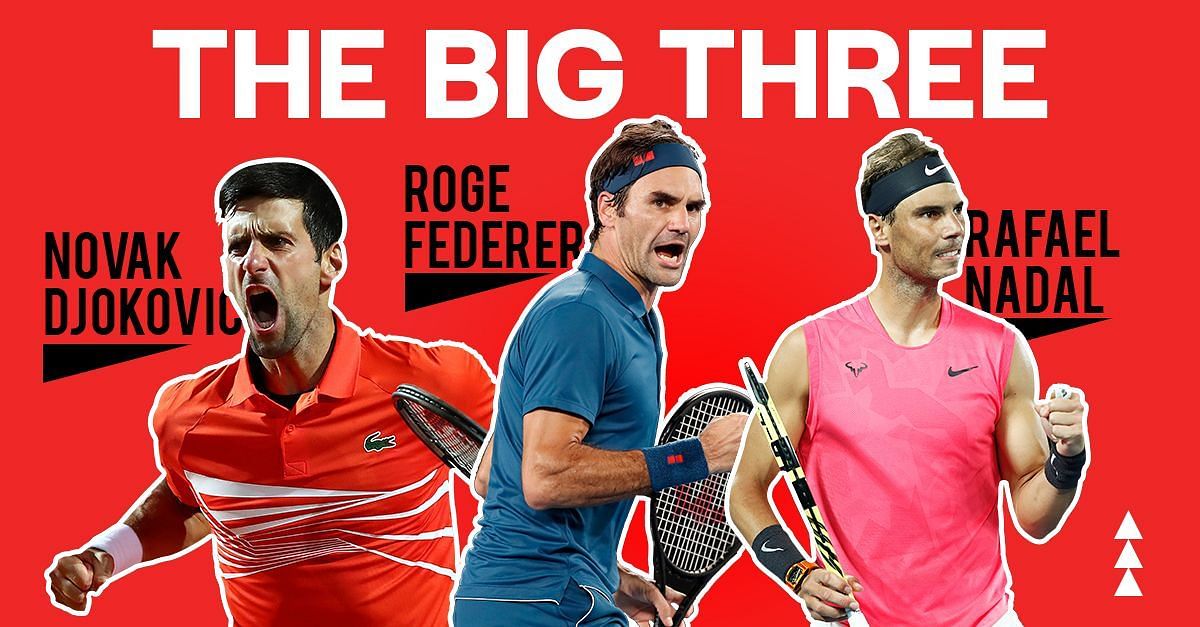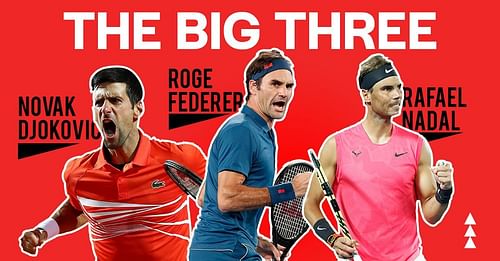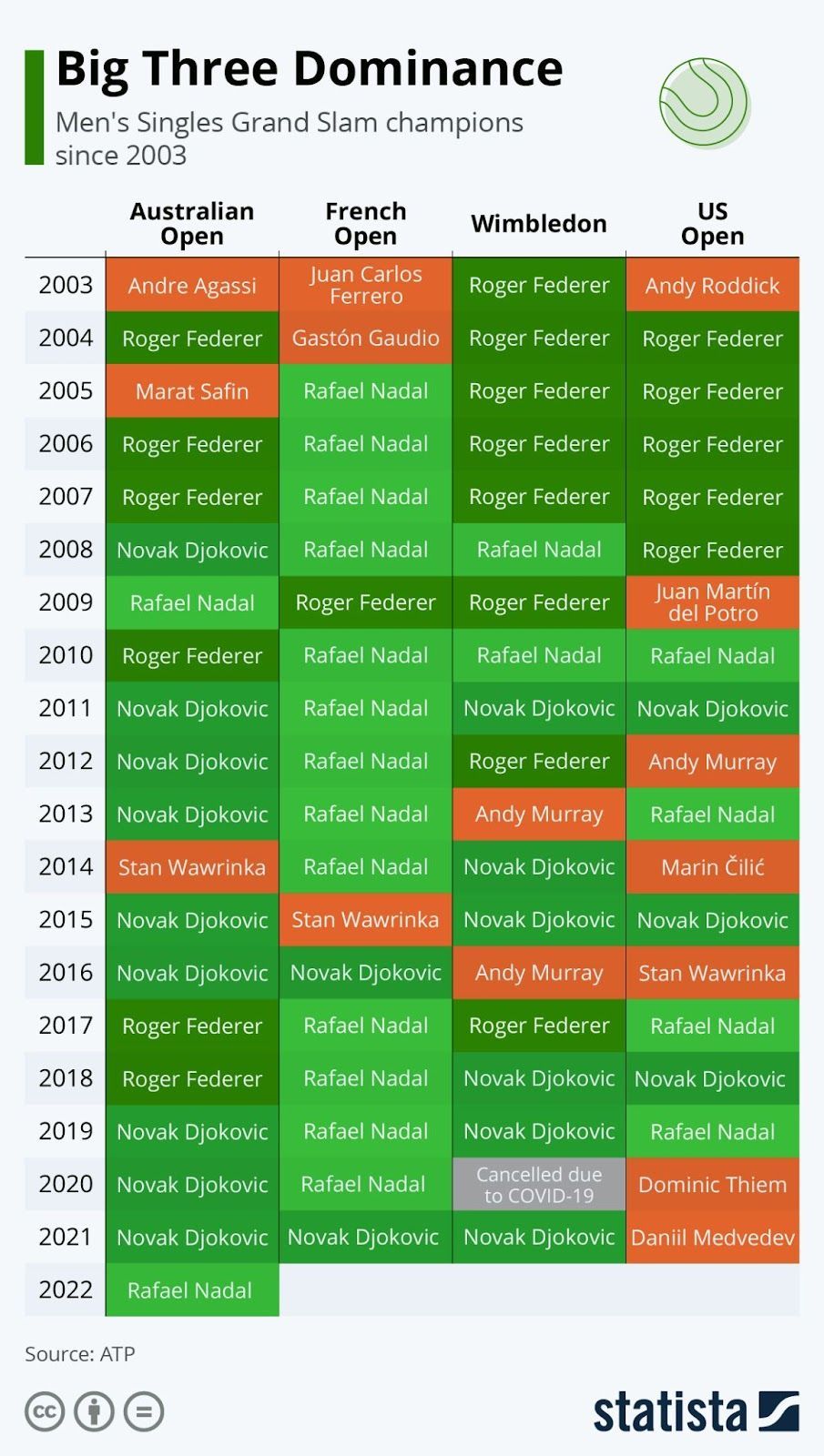
The dominance of Roger Federer, Rafael Nadal, and Novak Djokovic: are the Big Three a bane for tennis' commercial future?

The dominance of the “Big Three” in men’s tennis is still strong, most tennis fans would be inclined to say. With Rafael Nadal carving his name yet again in the history books after a record-shattering 21st Grand Slam title at the 2022 Australian Open, few would disagree.
But amid renewed chants of Nadal being the “Greatest of All Time,” or “GOAT,” reaching a crescendo, there's an important question that may be easy to overlook - has the dominance of the Big Three been so strong that it is hurting the future fan base and commercial future of men’s tennis?
While some may unconsciously favour the underdog in sporting events, men’s tennis, over the past decade-and-a-half, has never really been in any danger from this phenomenon. Indeed, some would even have come to expect a turnaround from Nadal.
This fan behaviour has been the result of a collection of similar memories over the years, where one of the Big Three has pulled off comeback victories time and again on their way to the pedestal on which we now place and worship them.
This is certainly not meant to take anything away from the obstacles that Nadal had to overcome. From coming back from a foot injury and being on crutches earlier in 2021 to winning a Grand Slam final against an able opponent 10 years younger than him was certainly an amazing feat.
However, such is the extent to which tennis fans the world over have become accustomed to seeing Nadal (or Djokovic, or Federer) rise from the ashes to script an unthinkable victory.
But can fans really be blamed for this? Not really. To take a leaf out of Pavlov’s book, their behaviour has simply been the result of conditioning over the last 15 years. The trio of Nadal, Federer, and Djokovic have no doubt been better than everyone else in this era, and were either on track to win or already had ten, eight, and five Grand Slams respectively to their name by the age of 25.

What the continued dominance of the trio has meant, however, is that the sport has seemingly bent over backwards to accommodate the three superstars. As Nick Kyrgios recently put it at the 2022 Australian Open:
“Tennis has really only marketed three players over the last decade, and now it’s kind of caught up to them.”
Some personalities, including Djokovic and Patrick Mouratoglou have also raised concerns in the past about the average age of a tennis fan being 61 years and increasing.
The statistic in question was found to be true, yet categorically limiting in the context of Djokovic and Mouratoglou's comments. Based off a 2016 study by Magna Global based on Nielsen and U.S. census data, the statistic only considered American tennis fans who watched men’s tennis on broadcast or cable television, and not on streaming services, which tend to skew towards younger audiences.
Looking beyond the Big Three
While the chorus of the “GOAT debate” is sure to resonate well past the point of all three players' retirements, men’s tennis has already lost the plot. The fault lies not with the players or even the fans, but those who have covered it (the media), and those that are supposed to market it to broaden the fan base.
The constant bombardment of statistics to fans, even beyond just the number of Slams won by the Big Three — such as the number of Slam finals which have featured one of the three players in the decade and a half or so — has led to a fetishization of statistics and superlatives associated with the trio.
The surge in data available and the “GOAT debate” has only meant that it is no longer a debate for debate’s sake. It has also taken away much-needed attention, marketing spends, sponsorships, television spots, media coverage, and column inches from the interesting developments that have been happening in the sport.
Exciting new challengers bearing the brunt of the resources devoted to the Big Three include lanky Russian Daniil Medvedev, Canadian duo Felix Auger Aliassime (commonly referred to as ‘FAA’) and rising star Denis Shapovalov, and brilliant new Spaniard on the block, Carlos Alcaraz. Not to forget women’s tennis overall, which has been serving up a slew of compelling stories and fresh players.
The looming question, irrespective of how many Slams the Big Three end up winning, is what comes next for tennis. Men’s tennis is still caught up in marketing and wringing the last drop of value out of the Big Three players as they approach the sunset of their careers. The most important job for the custodians of the sport now should be to ensure that fans fall in love with not just individual players but the sport itself, in order to ensure continuity and longevity in their fanbase and the commercial value of the sport’s properties.